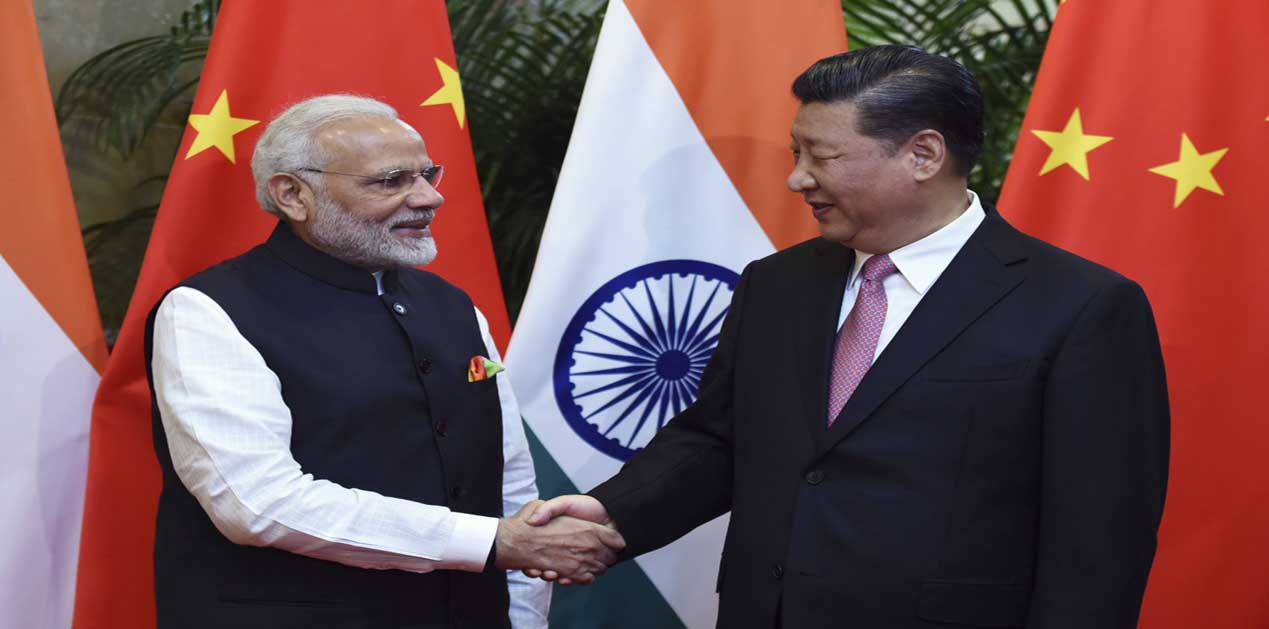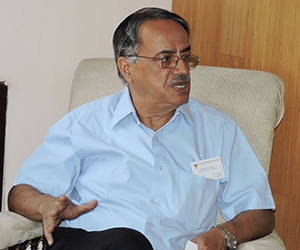The informal summit between Modi and Xi has taken place at an appropriate time when one looks at both the global and regional situation as also at the domestic situations in both the countries. While the statements made by the Indian and Chinese sides reflect their common approach to the forces of globalisation there is also acknowledgement by the Indian side of President Xi’s consolidation of power during 19th Congress of the Communist Party of China (CPC) and then later at the National People's Congress (NPC). There is also a realisation that both sides have to build bridges for a long term stable and positive relationship notwithstanding the differences. PM Modi on his part has been emphasizing since the last Shanghai Cooperation Organisation (SCO) Summit in Astana in June 2017 that differences should not be allowed to become disputes.
From achieving a stabilised relationship with China also has bearing on the evolving domestic politics. Any incidents on the India-China border whether intended or unintended would always be used by the Indian opposition parties to paint the ruling party in a negative light. And if there are any perceived reverses along the Line of Actual Control (LAC) that could be blown up by the opposition. Even now the opposition leadership in India has questioned the lack of a structured agenda for the informal summit as also why the question of China-Pakistan Economic Corridor (CPEC) and other contentious issues were not brought up.
After the informal summit, there is a degree of confidence that now with President Xi acquiring more centralised and strict control over PLA especially after the recent defense reforms the situations like what happened during President’s Xi’s visit to Ahmadabad in 2014, i.e., Chumar incident on the border, are unlikely to occur. In fact, there was a pattern that whenever there was a high level bilateral meeting, some incident or the other took place along the LAC that had a negative impact. With maintenance of high level strategic communication as envisaged during the informal summit such incidents would be avoided.
As a confidence building measure the joint exercises between the two militaries would also be resumed. In fact, both militaries would also be taking part in the SCO’s joint exercise ‘Peace Mission’. Further, there has been an indication of forward movement in establishment of a ‘hot line’ between the two militaries. This is again a confidence building measure that would ensure that crisis at the border are avoided and if they occur by some mischance they are quickly diffused. The possibilities of avoiding any aggressive patrolling and instead carrying out joint patrolling are also being talked about between the two sides.
The fact that such an informal summit took place and that too before the coming SCO summit gave Modi and Xi plenty of time over a period of two days to exchange their respective visions for their countries, the evolving relationship and possibilities for the future.
PM Modi has domestically pushed development as the main theme of his national efforts; he also realizes that India needs almost one trillion USD in next five years to improve its infrastructure. While India has its connectivity plans Modi is also quite keen to get Chinese funds for development on mutually beneficial terms. CPEC, of course, remains an obstacle for India to join the Belt and Road Initiative (BRI). Before the CPEC became the flagship project of the BRI India had joined as member of Asian Infrastructure Investment Bank (AIIB) and also endorsed Bangladesh, China, India and Myanmar initiative (BCIM). Chinese investment in India’s infrastructure outside the ambit of BRI has not been ruled out. In fact, there is potential for High Speed Rail construction from New Delhi to Chennai. Some survey for up-gradation of the rail track had been carried out by a Chinese company earlier.
That both sides will set up a joint economic project in Afghanistan after consultation with Kabul would also be a welcome step. Such a project was earlier visualised in 2010. This would not only contribute to the economy of Afghanistan but it could also be a forerunner for many more such joint projects. India has been involved in many developmental projects in Afghanistan though Pakistan has always been suspicious of such Indian projects. And in a way this would also be a positive endorsement and recognition of India’s developmental activities in Afghanistan. The joint project would indicate that both India and China are interested in stabilising the region and are working towards ushering in peace and prosperity. Possibly, this could also moderate Pakistan’s trenchant opposition to anything Indian in Afghanistan and might, in the long run, reduce Pakistan’s destabilising activities in Afghanistan.
While both sides did agree on their broad approach to terrorism Indian view on terrorism emanating from Pakistan, of course, did not find mention in any statements after the summit. Perhaps, there could be another time and place for it. It is not beyond the realm of possibility that Pakistani terror groups like Lakshar-e-Taiba and Jaish-e-Mohammed may be named in the SCO summit declaration like what was done in the last Xian BRICS Summit declaration in September 2017. These groups were bracketed with global terror groups Islamic State and Al Qaida; this rhymed very well with India’s efforts on cross border counter terrorism.
Addressing the trade imbalance also received necessary attention in the informal meeting though details of how it will be realized did not find mention which any case would be left to the trade and commerce ministers to work out in the coming months. It also needs to be noted that a few days ago both India and China besides a few other countries joined together at the WTO to warn the US about its unilateral trade measures imposed under its domestic laws. However, from Indian perspective there needs to be a discernible progress on rectifying the bilateral trade imbalance that is hugely in favour of China.
Overall, the limited objectives that were set out for the Modi-Xi summit have been largely achieved and the meeting can be said to be very successful. The chill that prevailed after the Doklam affair has distinctly been removed and an ambience of positivity has been created. Nevertheless, both sides now need to work together to craft out policies that address each other’s concerns. Even a small degree of progress on the issues bedeviling the India-China relations can contribute to a large extent in further enhancing and strengthening of the bilateral relationship. Before the next bilateral summit occurs, there should be some concrete progress to show that both sides are effectively implementing the broad understanding reached between Modi and Xi at Wuhan.
(Views expressed are of the author and do not necessarily reflect the views of the VIF)
Image Source: https://asia.nikkei.com/Politics/International-Relations/Modi-and-Xi-agree-to-boost-communication-between-their-militaries











Post new comment